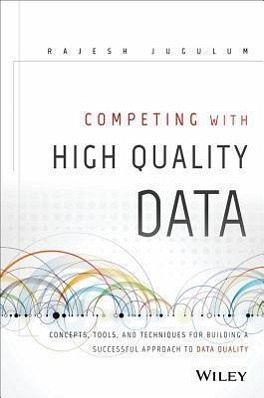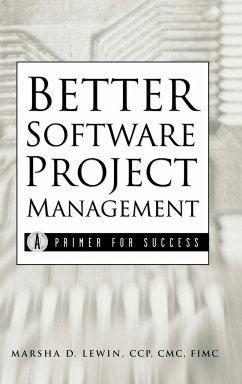
Competing with High Quality Data
Concepts, Tools, and Techniques for Building a Successful Approach to Data Quality
Versandkostenfrei!
Versandfertig in über 4 Wochen
96,99 €
inkl. MwSt.
Weitere Ausgaben:

PAYBACK Punkte
48 °P sammeln!
"In this book by Dr. Jugulum, readers will learn how data can be systematically collected and deduced. Recommend it highly." --Nam P Suh, Former President of Korea Advanced Institute of Science and Technology, Ralph E & Eloise F. Cross Professor Emeritus at MIT "It is common sense that without quality data there cannot be quality decisions . . . Rajesh does an excellent job of explaining step by step how to develop a data quality program and implement it." --Desh Deshpande, Entrepreneur, Life member MIT Corporation, Co-chair National Council for Innovation and Entrepreneurship QUALITY DATA MEA...
"In this book by Dr. Jugulum, readers will learn how data can be systematically collected and deduced. Recommend it highly." --Nam P Suh, Former President of Korea Advanced Institute of Science and Technology, Ralph E & Eloise F. Cross Professor Emeritus at MIT "It is common sense that without quality data there cannot be quality decisions . . . Rajesh does an excellent job of explaining step by step how to develop a data quality program and implement it." --Desh Deshpande, Entrepreneur, Life member MIT Corporation, Co-chair National Council for Innovation and Entrepreneurship QUALITY DATA MEANS QUALITY BUSINESS All over the world, organizations are under scrutiny for how they manage and handle the massive volumes of data that they collect and store. You can get ahead today with Competing with High Quality Data: Concepts, Tools, and Techniques for Building a Successful Approach to Data Quality, a comprehensive guide for professionals concerned with data quality issues and programs. In Competing with High Quality Data, Rajesh Jugulum takes you through the steps you can follow to vault your company to the next level of operational efficiency through data quality management. The book explains: * The data quality program and its four-phase approach: Define, Assess, Improve, and Control * How data quality can increase efficiencies and maximize organizational benefits * The effects of a poor or non-existent data quality program * Why data quality must be integrated with process quality * The importance of building an enterprise-wide data quality practices center With a four-phase approach, Jugulum shows you how to ensure that every data quality project follows these phases to: * Reduce costs * Reduce manual processing or rework * Improve reporting * Enhance revenue opportunities Prepare your company for the future of increased competition and enhanced regulation that demands quality data. With Competing with High Quality Data , get your data quality program in order before, rather than after, you make decisions that could affect the future of your organization.













